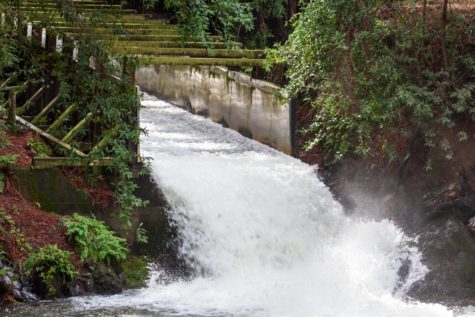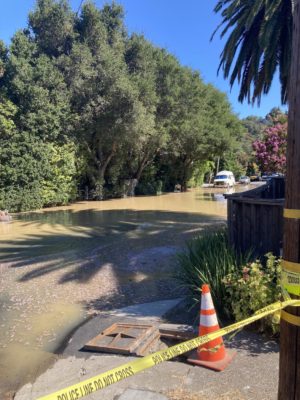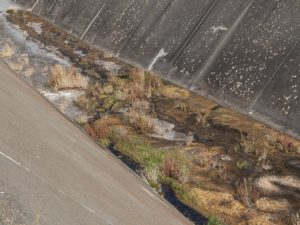Recent storms bring reservoir levels to full capacity
The Lake Lagunitas reservoir is full of rainwater from recent storms.
Throughout Jan., storms swept across California, bringing heavy rainfall to locations affected by a multi-year drought. The recent storm caused every operating reservoir in Marin County to reach capacity on Tuesday, Jan 10. While the recent “atmospheric rivers” have caused problems such as flooding, Marin’s wildlife has seen numerous benefits, such as an increase in drinking water, and a decrease in the spread of disease.
Consistent rainfall is welcome news for many locals, especially after years of drought. This additional water has and will continue to help mitigate the effects of California’s “dry season.”
“Right now we have almost 80,000 acre-feet of water in our reservoirs… Normally we would have about 65,000 acre-feet this time of year, so about 15,000 more,” said Tyler Silvy, Senior Communications Specialist for Marin Water. “During the storms, we hit capacity … and that was the first time we had hit all seven reservoirs at capacity since May of 2019,” Silvy said.
While sudden rises in reservoir levels can be beneficial to local wildlife, it can also be harmful to certain species. According to Archie Williams Sea-Disc teacher Michael Rawlins, silt from local reservoirs can suffocate salmon eggs.
“Leading up to the dams that create the reservoirs is the salmon spawning habitat…If they’ve already laid their eggs in the creek and they get a really high flood event or rain event then all that sediment that’s washing down the creek will actually choke out and kill the eggs”

Alison Hermance, the Director of Communications and Marketing at Wildcare on-profit animal rescue center, has observed drought in Marin since 2003. According to Hermance, when animals compete for scarce water resources, predatory animals often kill off rivals. Additionally, with so many animals converging on one water source, the water can be contaminated with disease.
“[During a drought] all of the water dries up and all of the animals have to go to a small single location to get water, that causes all of the problems that you actually see any time you have a limited resource for animals.”
According to Hermance, full reservoirs can be advantageous in more ways than just added drinking water for wildlife, as certain migrating animals rely on larger bodies of water to land on.
“It’s great for most of the wildlife, certainly migratory ducks, they’re gonna have more places to land. Anybody that relies on the water is going to have more water to land in and [utilize],” Hermance said.
The abundant boost in reservoir levels has been beneficial to local wildlife, and significant in helping resolve the lack of water common during previous summers.
“Our water resources specialist expects us to have a pretty strong [water supply for the year] because our reservoir levels are so high compared to normal,” Silvy said.
Updates for Marin’s reservoir and rainfall levels can be found on the Marin Water website.
Your donation will support the student journalists of Archie Williams High School. Your contribution will allow us to purchase equipment and cover our annual website hosting costs. Each donation will receive a magazine subscription for a year (6 copies a year), and become a part of the important work our publication is doing.
$35 -- Subscription to the magazine
$50 -- Silver Sponsorship
$75 -- Gold Sponsorship
$100 -- Platinum Sponsorship

Sophia is a freshman, in her first year of journalism. She was born in England and lived there for six years. You can find her painting or cooking, and...

Ava is a sophomore, in her second year of the class. She loves to dance, specifically ballet and has been doing it most her life. Her favorite thing to...




















